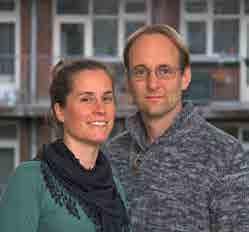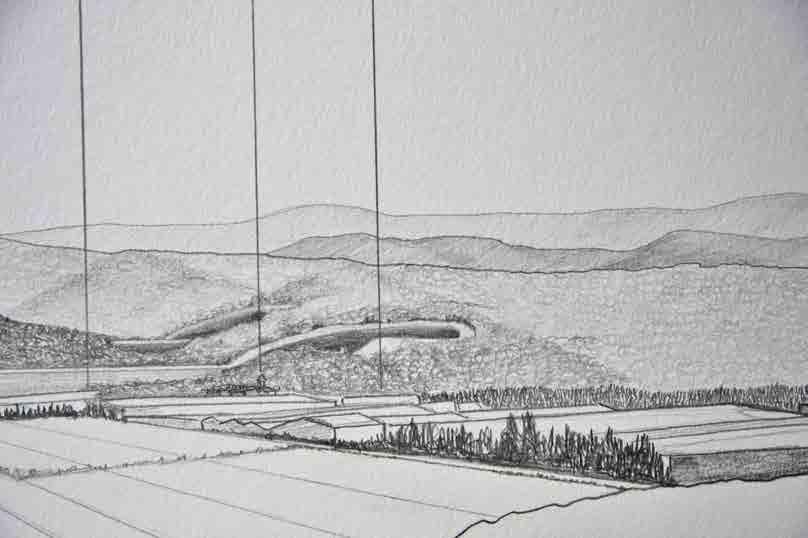
3 minute read
IRATXE JAIO - KLAAS VAN GORKUM
IRATXE JAIO (Markina Xemein, 1976) KLAAS VAN GORKUM (Delft, 1975)
http://www.parallelports.org/
Advertisement
Iratxe Jaio has a degree in Fine Arts from the UPV/EHU. After finishing his studies in Fine Arts, in 1998 he moved to the Netherlands and completed his training at the KABK in The Hague (1998-2000), at the Piet Zwart Institute in Rotterdam (2000-2002) and at the Jan van Eyck of Maastricht (2002-2004). Since 2001 she collaborates with the artist Klaas van Gorkum. The practice of it can be described as experimental archaeology. She analyzes the social meaning of existing objects and documents to appropriate and recreate them in another context. She has analyzed the notion of artistic work through the juxtaposition between the creative process and industrial mass production and the corresponding labor relations. They have often collaborated with archaeologists to develop proposals that explore both conflicting heritage and the role of materiality in both disciplines. Both artists were able to delve into this work in the period 2015-2017 thanks to the Nearch grant from the Jan Van Eyck Academy.
Iratxe Jaio est diplômée en Beaux-Arts dans l’UPV/EHU. Après avoir terminé ses études aux Beaux-Arts, elle s’installe en 1998 aux Pays-Bas et complète sa formation au KABK de La Haye (1998-2000), au Piet Zwart Institute de Rotterdam (2000-2002) et au Jan van Eyck de Maastricht (2002-2004). Depuis 2001, elle collabore avec l’artiste Klaas van Gorkum. Sa pratique peut être qualifiée d’archéologie expérimentale. Ils analysent le sens social d’objets et de documents existants pour se les approprier et les recréer dans un autre contexte. La notion de travail artistique a été analysée à travers la juxtaposition entre le processus créatif et la production industrielle de masse et les relations de travail correspondantes. Ils ont souvent collaboré avec des archéologues pour développer des propositions qui explorent à la fois le patrimoine conflictuel et le rôle de la matérialité dans les deux disciplines. Les deux artistes ont pu se plonger dans ce travail dans la période 20152017 grâce à la bourse Nearch de l’Académie Jan Van Eyck.

Alemanen Kanposantue. 5 lithographs made using aluminium plates on Somerset Velvet White paper. 27x85 cm. 2019. Courtesy of La Taller Gallery (Bilbao). Iratxe Jaio and Klaas van Gorkum work on projects that give rise to different artistic pieces. In recent years, they have worked on a project entitled Alemanen kanposantue, referring to the tombstone erected in tribute to three German soldiers who died in 1937, and which stands at the side of the road running between Urbina and Legutio (Álava). It is a monument that has generated a fair degree of discomfort over the years, first among those who lost the war, and later among the victors, and which has suffered many vicissitudes, including having the names of the fallen soldiers it was supposed to commemorate chipped off. When the damaged stone was laid horizontally, it reminded the artists of a relief map, sparking the idea to represent the landscape of the war front. The result is represented in these 5 lithographs, which show that the struggle is still ongoing.
Alemanen Kanposantue. 5 lithographies réalisées sur plaque d’aluminium sur papier Somerset Velvet White. 27x85 cm. 2019. Courtoisie de la Galerie La Taller (Bilbao).
Iratxe Jaio et Klaas van Gorkum travaillent sur des projets qui donnent lieu à des pièces artistiques différentes. Ils ont consacré ces dernières années au projet intitulé Alemanen kanposantue, qui désigne la tombe en hommage à trois soldats allemands décédés en 1937 érigée à côté de la route entre Urbina et Legutio (Alava). Un monument embarrassant pour les vaincus pendant la guerre et plus tard pour les vainqueurs, qui a connu des vicissitudes diverses avant que les noms des honorés ne terminent effacés en cassant la pierre. Mise à l’horizontale, la pierre attaquée rappela aux artistes un relief cartographique, si bien qu’ils commencèrent à représenter le paysage du front de guerre. Le panorama résultant aboutit à ces cinq lithographies qui montrent que le lieu de combat reste ouvert. .








